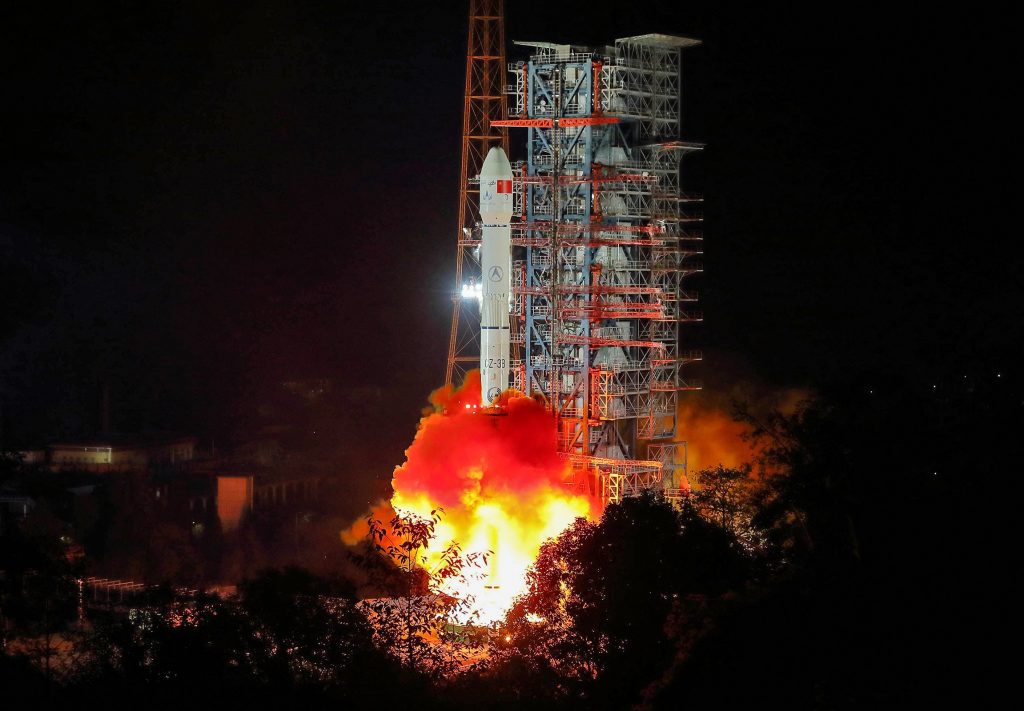Beijing: China’s Long March-3B rocket, regarded as the main stay of the country’s space programme since 1970, successfully completed its 300th launch by putting a new communication satellite into orbit Sunday.
The indigenously-built rocket had send more than 500 spacecraft into space.
“This is a milestone for China’s space industry development,” Wu Yansheng, board chairman of the China Aerospace Science and Technology Corporation (CASC) said.
The Long March carrier rocket series, developed by CASC, is responsible for about 96.4 per cent of all the launch missions in China.
It took 37 years for the Long March rockets to complete the first 100 launches, 7.5 years to complete the second 100 launches, and only about four years to accomplish the final 100, with the average number of launches per year increasing from 2.7 to 13.3 and then to 23.5, the state-run Xinhua news agency reported.
The Long March carrier rockets helped provide launch services for countries participating in the Belt and Road Initiative, including Algeria, Pakistan and Saudi Arabia.
“Intensive launches have become normal in China, indicating the rapid development of the space industry, the progress of science and technology and the enhancement of national strength,” said Shang Zhi, director of the Space Department of the CASC.
China joined the space club April 24, 1970, when the Long March-1 carrier rocket launched the country’s first satellite, Dongfanghong-1, into orbit. At that time, the carrying capacity of the Long March rocket was only 300 kg.
November 3, 2016, China’s current largest carrier rocket, the Long March-5, made its maiden flight, with its carrying capacity reaching 25 tonnes for low-Earth orbit and 14 tonnes for geosynchronous orbit.
The success rate of the 300 launches of the Long March rockets stood at 96 per cent, according to CASC.
During the third 100 launches, the Long March rockets sent a total of 225 spacecraft, weighing about 240 tonnes, into space, with a success rate of 97 per cent, reaching a high level in the world, said Shang.
From October 1996 to August 2011, the Long March rockets set a world record for 15 years of successful consecutive launches.
In 2018, the Long March rockets completed 37 consecutive successful launches, ranking a global first for the highest number of successful launches.
A total of 17 types of Long March carrier rockets have been developed and put into use since 1970, ensuring the implementation of a series of key space projects including manned space program, lunar exploration, BeiDou Navigation Satellite System (BDS) and the Gaofen Earth observation project.
In addition, the Long March carrier rockets also launched a large number of meteorological satellites, resource satellites and oceanographic satellites, as well as several innovative science satellites including DAMPE to search for dark matter, the world’s first quantum satellite, and an electromagnetic satellite to study earthquakes, playing an important role in promoting the economic, social and scientific development in China, the Xinhua report said.
Currently, China is developing new generation medium launch vehicles including the Long March-6A, Long March-7A and Long March-8. A test version of the Long March-5B, which has the largest carrying capacity to low-Earth orbit, has been produced and will be used to launch the modules of China’s space station, according to CASC.
China’s heavy-lift carrier rocket, the Long March-9, is expected to make its maiden flight around 2030 and will support manned lunar exploration, deep space exploration and construction of a space-based solar power plant.
The diameter of the body of the Long March-9 rocket will be nearly 10 meters. And the manufacturing of the rocket will also push forward the development of new materials, technologies, devices and equipment.
The new generation launch vehicles will gradually replace the old generation carrier rockets, and space transport vehicles will transition from one-time use to reusable in the future, Shang said.
PTI
